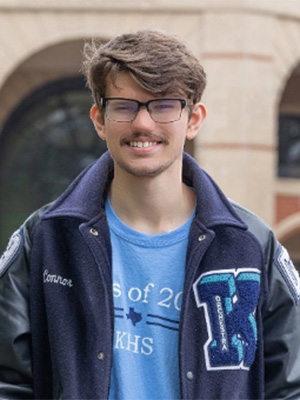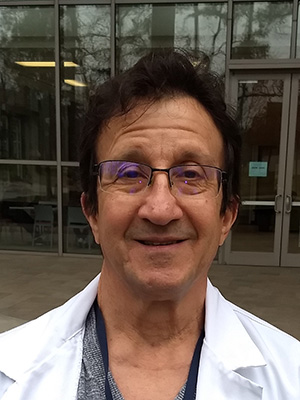The recent movie Oppenheimer brought recent attention to the Manhattan Project. For Lone Star College – Kingwood sophomore Connor McAdams, an important part of learning more about the Manhattan Project is learning about the traditionally underrepresented scientists who also contributed.

Image courtesy Connor McAdams, all rights reserved.
“People often acknowledge scientists such as J. Robert Oppenheimer, but other scientists who worked on the project are hardly ever acknowledged,” Connor says. “This is especially true for minority scientists, as people often underestimate them as a result of prejudice. I chose to write on Ralph Gardner-Chavis in order to ensure that his story is heard.”
A chemist, Gardner-Chavis was one of several African Americans whose research advanced the Manhattan Project’s goals. Gardner-Chavis was a chemist whose research on plutonium was critical to the development of the atomic bomb. But after his work on the Manhattan Project, Gardner-Chavis couldn’t find work as a chemist because of racism and ended up waiting tables.
“I detest the fact that many peoples’ contributions were (and still are) undermined because of aspects like race and gender,” Connor says. “Discrimination can cause important research to remain unnoticed, which is detestable. Regardless of who someone is, their works should be made known, and they should be acknowledged. I hope that my article will help Ralph Gardner-Chavis and his works become more prominent.”
Connor’s course at Lone Star was on environmental science, and his instructor, Dr. Brian Shmaefsky, was excited to offer the opportunity for his students to create biographies of diverse scientists like Gardner-Chavis through an initiative Wiki Education is running sponsored by the Broadcom Foundation.

Image courtesy Brian Shmaefsky, all rights reserved.
“I was excited to use Wikipedia as a means of providing students with accessible real-world writing experiences,” Dr. Shmaefsky says. “The students were much more engaged in writing the Wikipedia entries than they were with other assignments. I fully believe that STEM fields advance more equitability with diverse representation. Writing biographies of individuals from diverse backgrounds better reflects the true diversity of the scientific community.”
Connor says the hardest part for him was finding sources that met Wikipedia’s Reliable sources policy. In his research, he tried to locate coverage in academic journals, but found that challenging due to the same historical marginalization of the work of scientists of color that led to Gardner-Chavis not being well known. Wikipedia, however, offered an opportunity to shed light on his work — once Connor dug up a few sources.
“My students gained insights into the varied challenges, contributions, and experiences of scientists who are underrepresented in textbooks, general reading books, and online resources,” Dr. Shmaefsky says. “Students began discussing how the unique cultural perspectives of underrepresented scientists influence the breadth, direction, and emphasis of research investigations.”
In the class, students discussed how having biographies of relevant scientists can influence students into pursuing a career in science, when they can have a role model to look up to from a similar background. That’s exactly why the Broadcom Foundation is funding this initiative, which encourages creation of new biographies of diverse people in STEM.
Professors, though, don’t just participate for this reason; they also want to make sure students are gaining core skills, and this project does that, according to Dr. Shmaefsky.
“Based on what I assessed from my students, the Wikipedia assignment encouraged students to learn effective research skills that included the ability to gather and evaluate accurate information from various sources,” he says “It also provided students with an understanding of the guidelines and ethical norms of online digital communication. The Wikipedia assignment was more effective than traditional teaching at instilling these skills.”
Connor found the whole experience rewarding, and he hopes to continue editing Wikipedia in the future. He’s grateful for the support of his partner, Christopher Voss, as well as for Dr. Shmaefsky for giving him the assignment in the first place.
“I definitely prefer writing for Wikipedia as opposed to a traditional assignment or term paper. This is because a Wikipedia article will continue to be edited and viewed. This is very different from academic papers, as those usually get filed away after you turn them in,” he says.
